This website uses cookies so that we can provide you with the best user experience possible. Cookie information is stored in your browser and performs functions such as recognising you when you return to our website and helping our team to understand which sections of the website you find most interesting and useful.
Your support helps us to tell the story
From reproductive rights to climate change to Big Tech, The Independent is on the ground when the story is developing. Whether it's investigating the financials of Elon Musk's pro-Trump PAC or producing our latest documentary, 'The A Word', which shines a light on the American women fighting for reproductive rights, we know how important it is to parse out the facts from the messaging.
At such a critical moment in US history, we need reporters on the ground. Your donation allows us to keep sending journalists to speak to both sides of the story.
The Independent is trusted by Americans across the entire political spectrum. And unlike many other quality news outlets, we choose not to lock Americans out of our reporting and analysis with paywalls. We believe quality journalism should be available to everyone, paid for by those who can afford it.
Your support makes all the difference.
With so much to see and do, Barcelona is a city you’ll want to get right, be it staying at a centre-of-the-action hotel, a memorable restaurant experience, or another tick on your world monument bucket list.
It’s not presumptuous to label Barcelona (aka Barna, not Barca) one of the world’s great cities. To witness the self-assured sense of identity, borne by an effortless style, debonair dining scene and embarrassment of cultural riches, is to know you’re experiencing a special place. Shades of Spain are evident, but Barcelona is painted a Catalan red and yellow, the capital of a distinctive and individualistic region.
It’s wise to plan ahead to make the most of your time, particularly when narrowing down the exhaustive lists of modernista (Catalan modernism) masterpieces, characterful neighbourhoods, art-jammed museums and scene-stealing restaurants that are commonly booked up in advance. The payoff can be spectacular, a flurry of otherworldly buildings and urban spaces, theatre of food and drink experiences, and distinctive culture. You’ll leave with Barna’s vivaciousness etched into your memory, along with the wish you didn’t have to waste time on sleep.
What to do
Get to grips with Gaudi
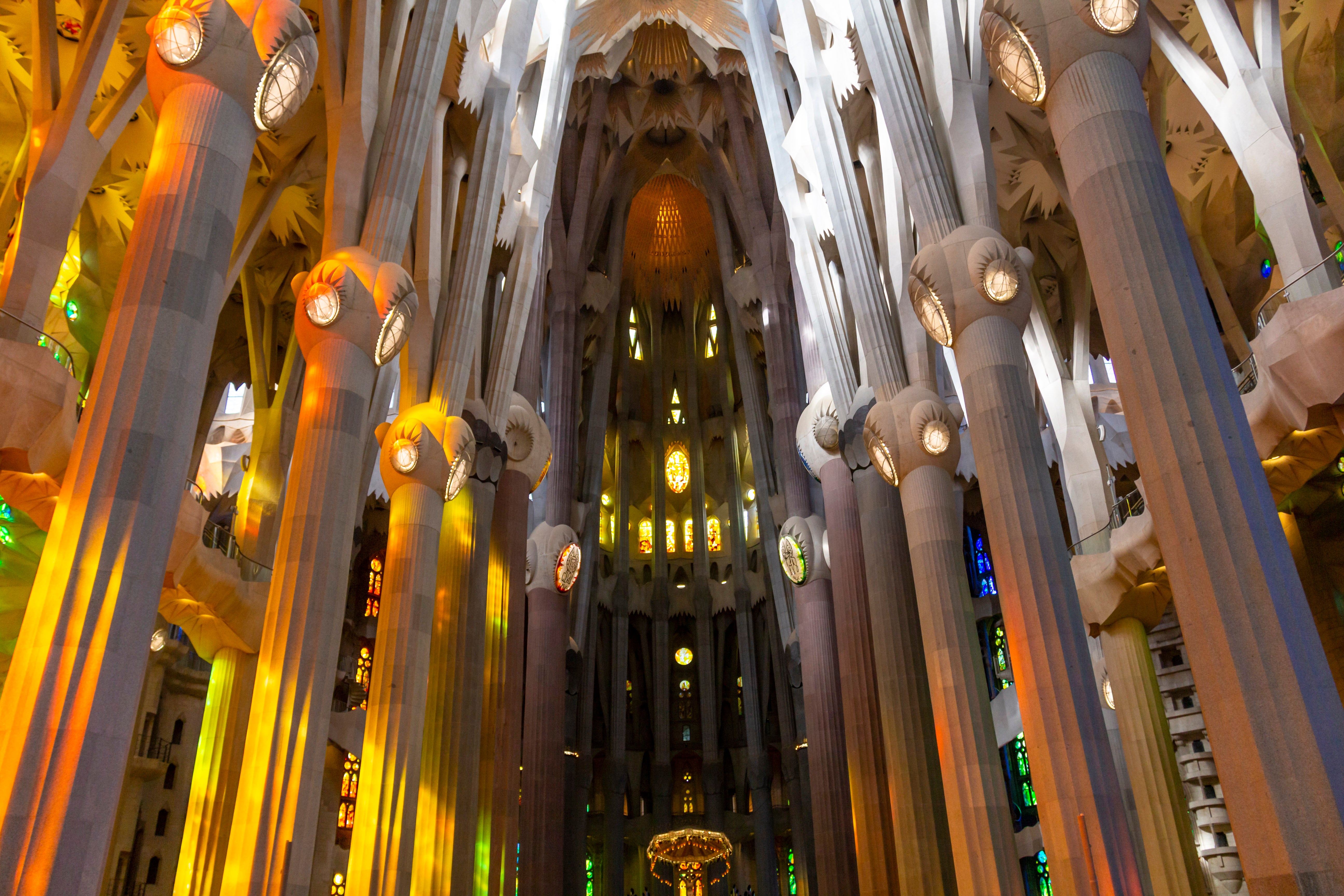
No architect’s work is so instantly recognisable as Gaudi’s. His buildings refuse to sit still, flowing and billowing with the unpredictable finesse of the natural world that inspired him so greatly. Start at the playful Park Guell (general tickets from €18/£14.94, daily), decked out like some fantastical candy wonderland, atop a hill with an excellent city view. That vista includes La Sagrada Familia (general tickets from €26/£21.60, or €36/£30 with access to the towers, book in advance, daily), the undisputed champion of Catalonian attractions. Ungainly yellow cranes indicate that it remains incomplete, even though Gaudi’s work began in 1883. Every inch of the exterior is embellished. The interior is a sylvan sanctuary of stone and stained glass. Completion is targeted for the centenary of Gaudi’s death in 2026, although delays are likely.
Plenty of smaller Gaudi cosmoses dot Barcelona’s streets. Casa Batllo (general tickets from €29/£24, buy well in advance, daily) is considered peak Gaudi. The “magical house” is an immersive confection of fantastical concepts. If Casa Batllo is from a fairytale, Palau Guell (general tickets from €12/£10, separate from the park above, closed on Mondays) is the villain’s lair, dark and brooding – although the rooftop mosaics hint at the swirling levity of his later works.
Read more: How to afford a family city break in one of Europe’s biggest tourism destinations
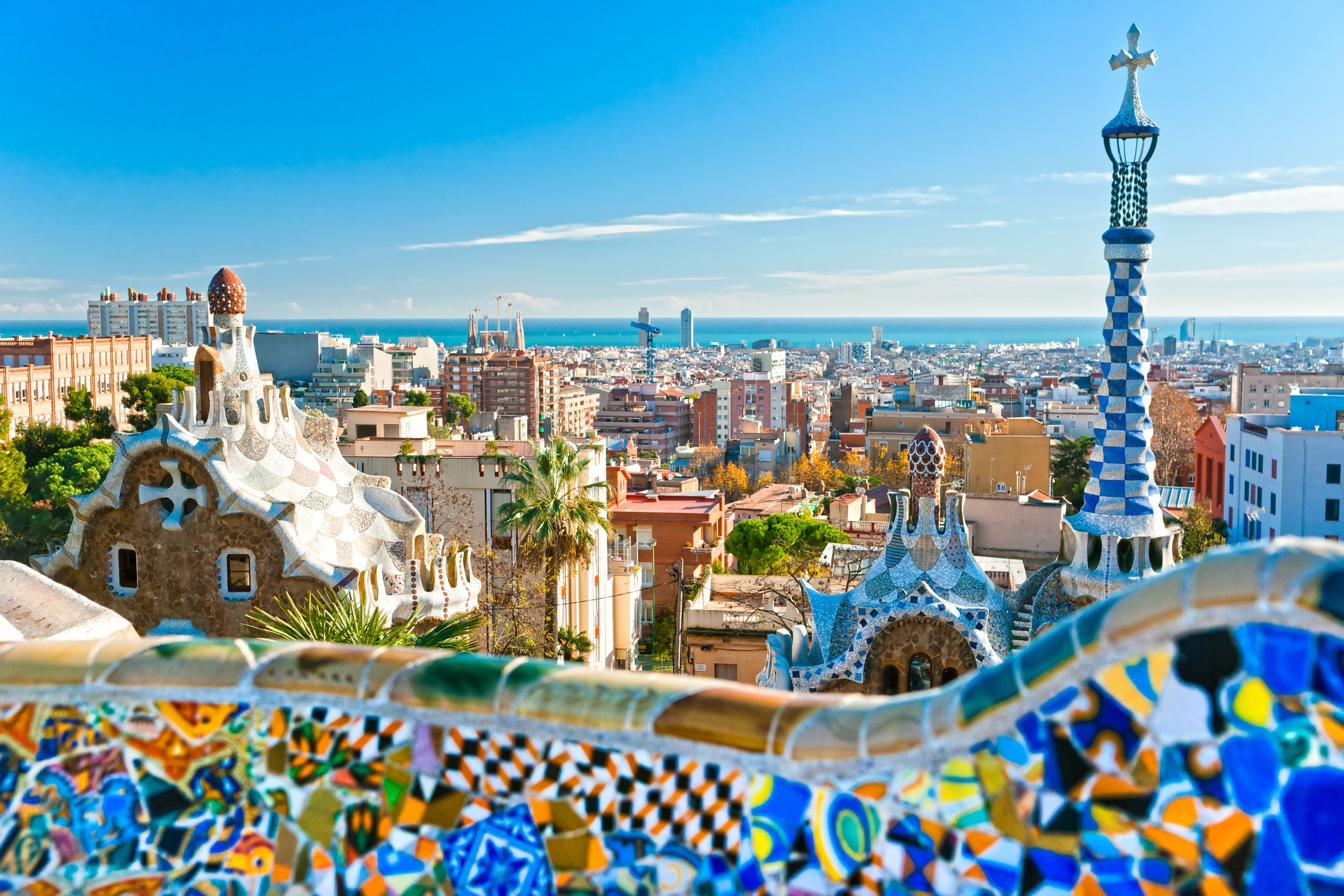
If your thirst for Catalan modernism remains unsated, the densest cluster of modernista buildings is around the Passeig de Gracia in L’Eixample. Here, you’ll find Josep Puig i Cadafalch’s outstanding Casa Amatller (general tickets €19/£15.84) sited beside Casa Batllo.
Ramble around
Barcelona’s cobbled squares, labyrinthine, vehicle-light streets and broad strokes of pedestrian-friendly city planning make exploring on foot a preferred method. Nothing epitomises this better than La Rambla, a wide thoroughfare that accommodates al fresco cafes, scent-rich florists, street artists and kiosks purveying all manner of goods, from lotto tickets to trinkets. Saunter is 1.3km (0.8-mile) stretch southeast from Placa de Catalunya towards the Columbus Monument.
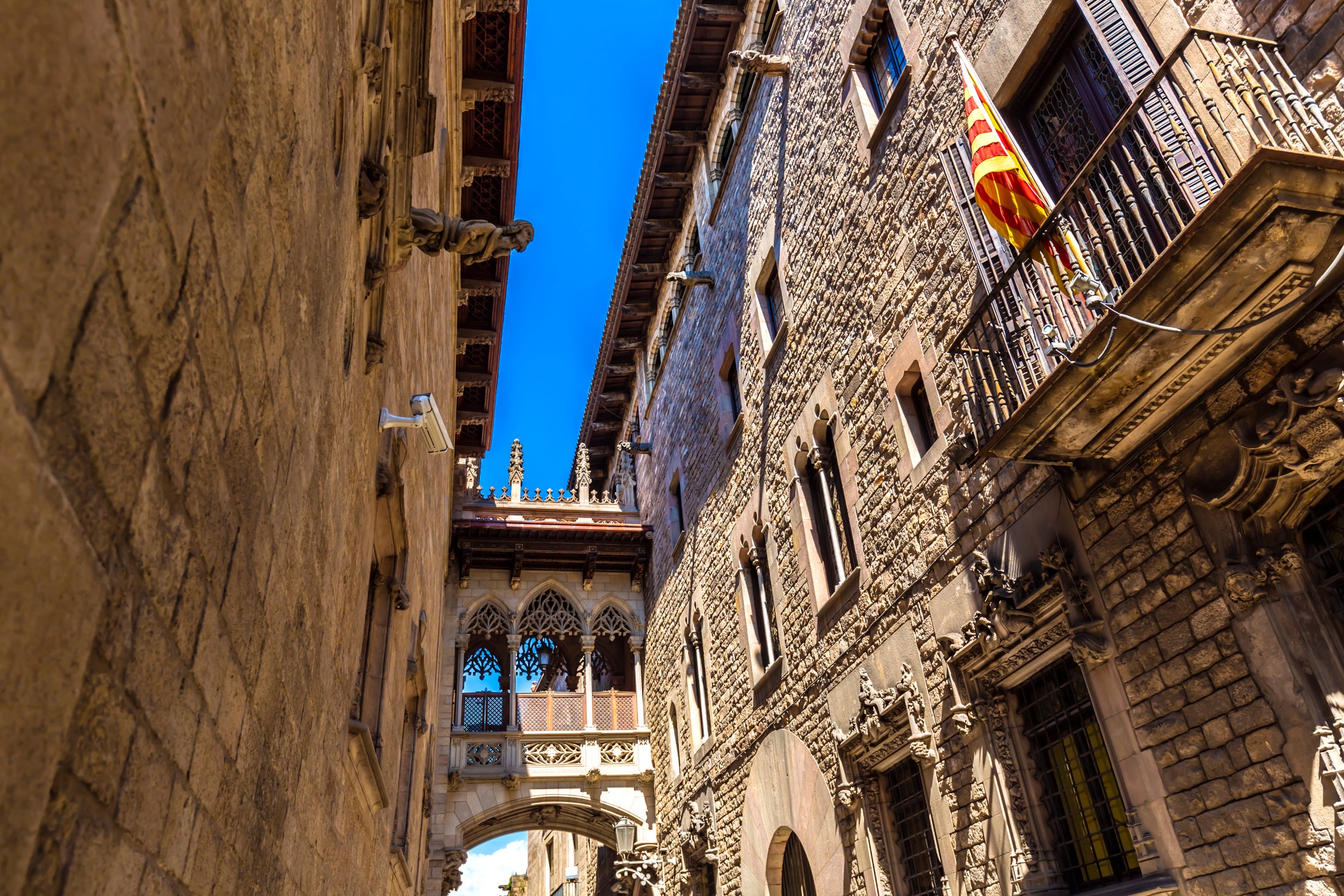
Delve down any street north of La Rambla and you’ll find yourself in the tight mesh of claustrophobic veins that form the Barri Gotic (Gothic Quarter), the pulsating core of the Ciutat Vella (Old Town). Many streets lead to the 13th-century La Seu (from €9/£7.50, Cathedral of Barcelona, daily but afternoon only on Sundays). The medieval neighbourhood has Roman roots; look out for surviving portions of its ancient city wall or temple columns.
Read more: The best things to do in Barcelona
The art of travel
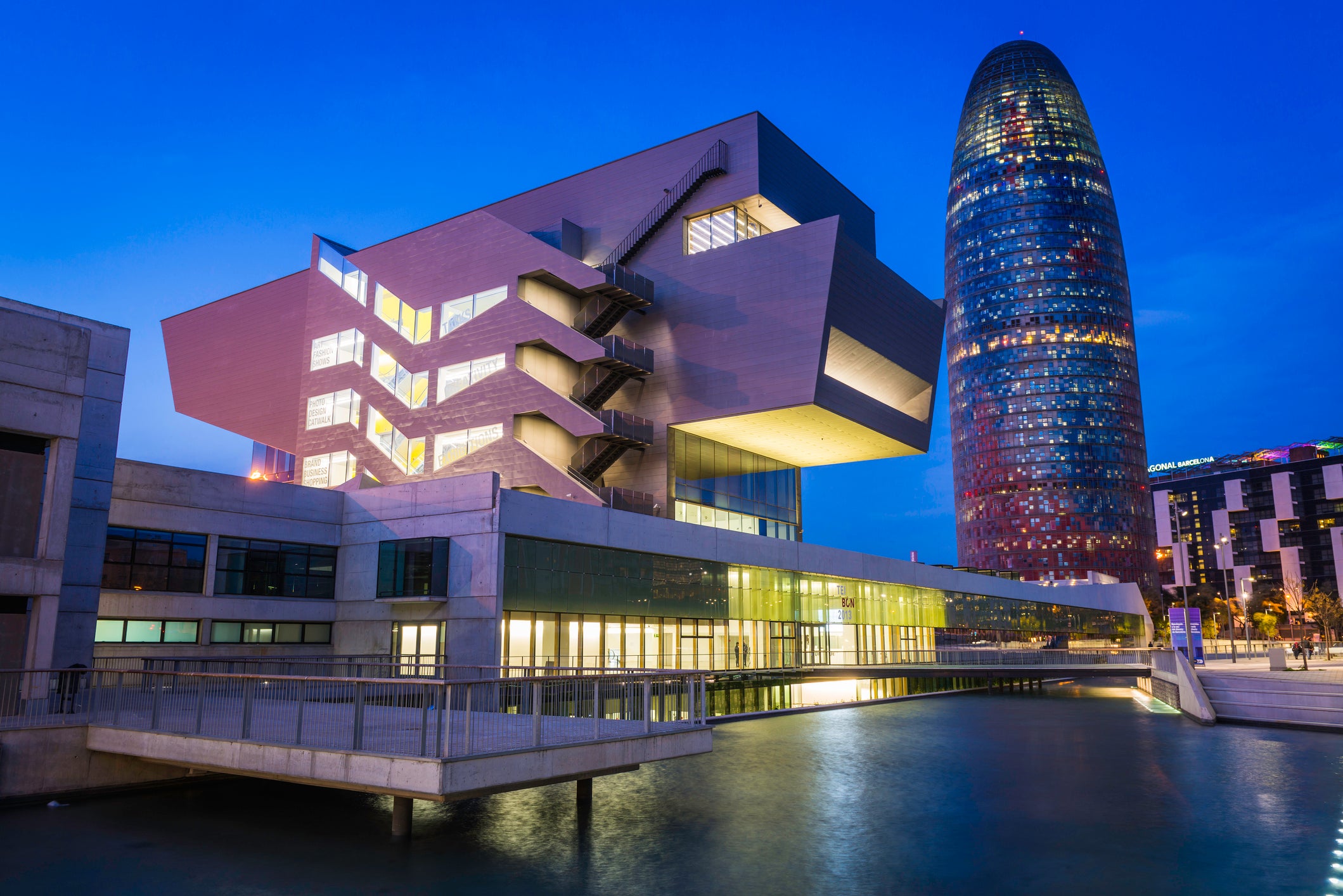
Barcelona is a major repository for some of Spain’s finest paintings and you could spend your entire trip strolling its cavernous galleries. Picasso spent his teenage years in the city whose modernista wave had a formative impact on the young artist’s sensibilities. The Picasso Museum (from €14/£11.67, closed on Mondays) houses more than 4,000 works by the great Cubist painter, all on permanent display, particularly from his early years through to the start of his 1904 ‘rose period’.
Picasso’s work and that of the Surrealists informed each other, and you can see major works by a key member of the latter camp at the Joan Miro Foundation (general tickets €15/£12.50, closed on Mondays), to which he donated much of the current collection. The museum sits on a leafy slope of Montjuic, which is also home to the Museu Nacional d’Art de Catalunya (general tickets €12/£10, closed on Mondays). MNAC is notable for its Romanesque art, plus an exhaustive collection of Catalan works spanning eight centuries.
The Design Museum of Barcelona (general tickets €6/£4.98, closed on Mondays) is a perfect place to gain a keener insight into the city’s globally recognised style across fashion, interior design and decorative arts. And talking of art, the beautiful game often reaches its zenith at Camp Nou, home of FC Barcelona. The museum (basic ticket from €28/£23.27) includes immersive experiences and an exhibition on the club’s history, players and trophies.
Read more: On the trail of Picasso in Barcelona, Catalonia’s art-loving capital
Where to stay
El Palace Barcelona
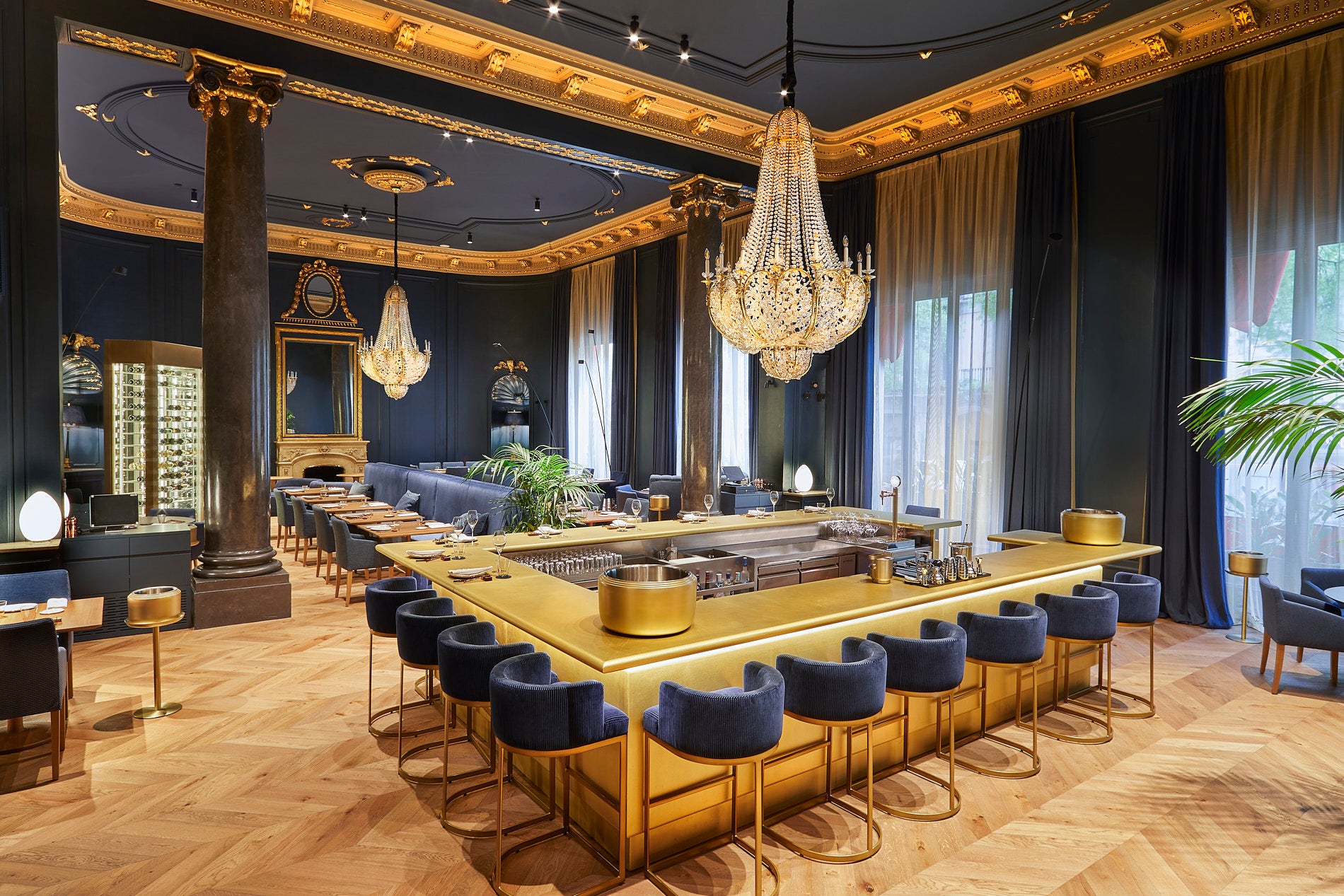
The doyenne of Barcelona’s accommodation scene, El Palace Barcelona sports lavish public spaces and an old-school approach to refined service. The hotel’s six decadent art suites are a sumptuous humblebrag of the glamorous former clientele who made El Palace Barcelona their home for weeks or even months at a time. Highlights are the painting suite, dedicated to Salvador Dali, while Ronnie Wood of the Rolling Stones helped design the music suite.
Casa Camper
Barri Gotic and El Raval are the best central spots for boutique hotels that aren’t budget breakers. Casa Camper is one such example in the hip Raval area, which is another way of saying the neighbourhood was quite seedy in recent memory. These days, the minimalist black, white and red design, quirky hotel sign and bicycles hanging from the ceiling are indicative of the Raval’s spiffy new image.
Serras Hotel
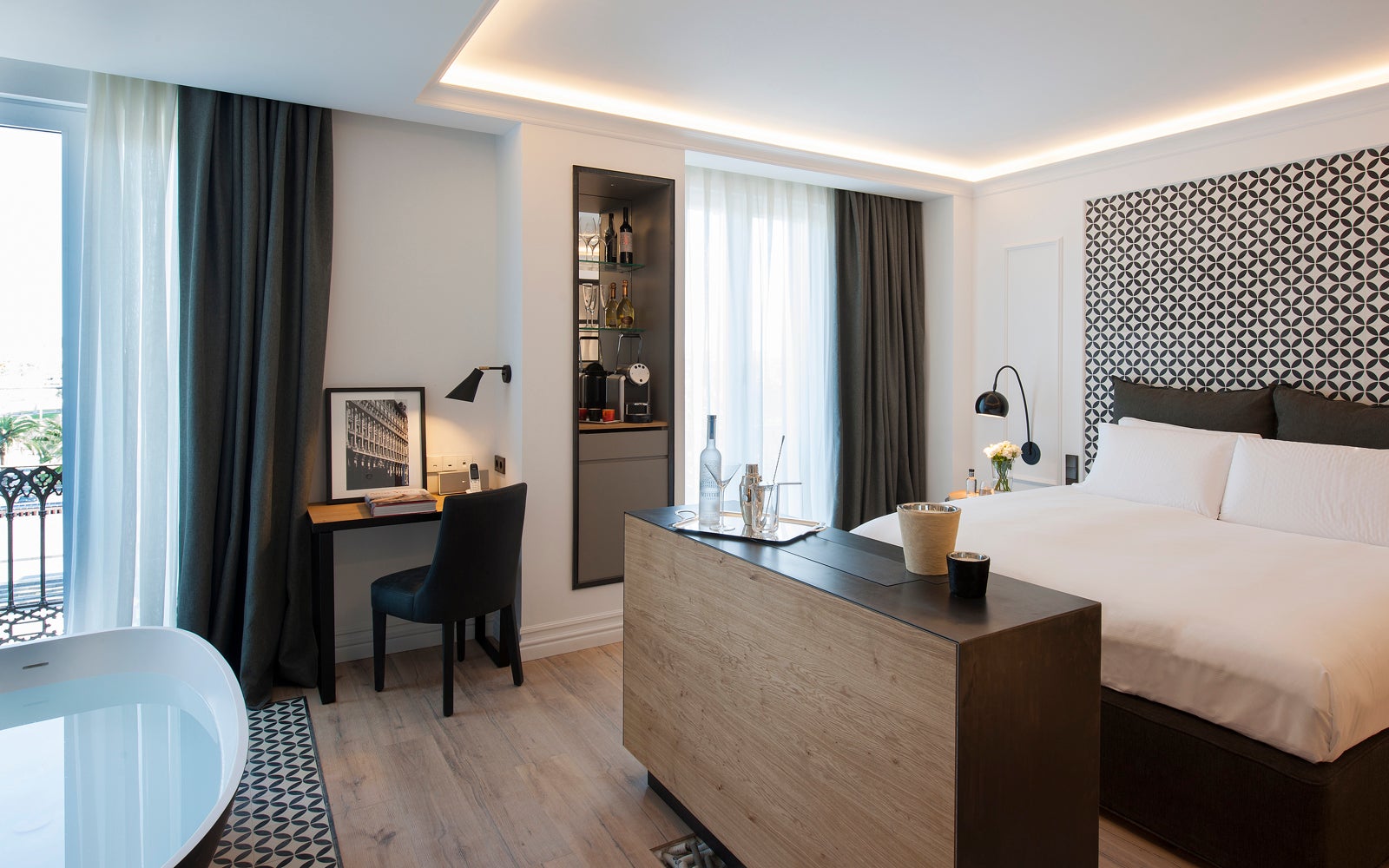
With all that Catalan modernism, it’s no surprise that there are plenty of hotels decked out in the city’s defining style. Serras Hotel’s restored modernist facade overlooks Port Vell at the seaward edge of the Gothic Quarter. As a teenager, Pablo Picasso had an artist’s studio in this building.
Hotel Arts Barcelona
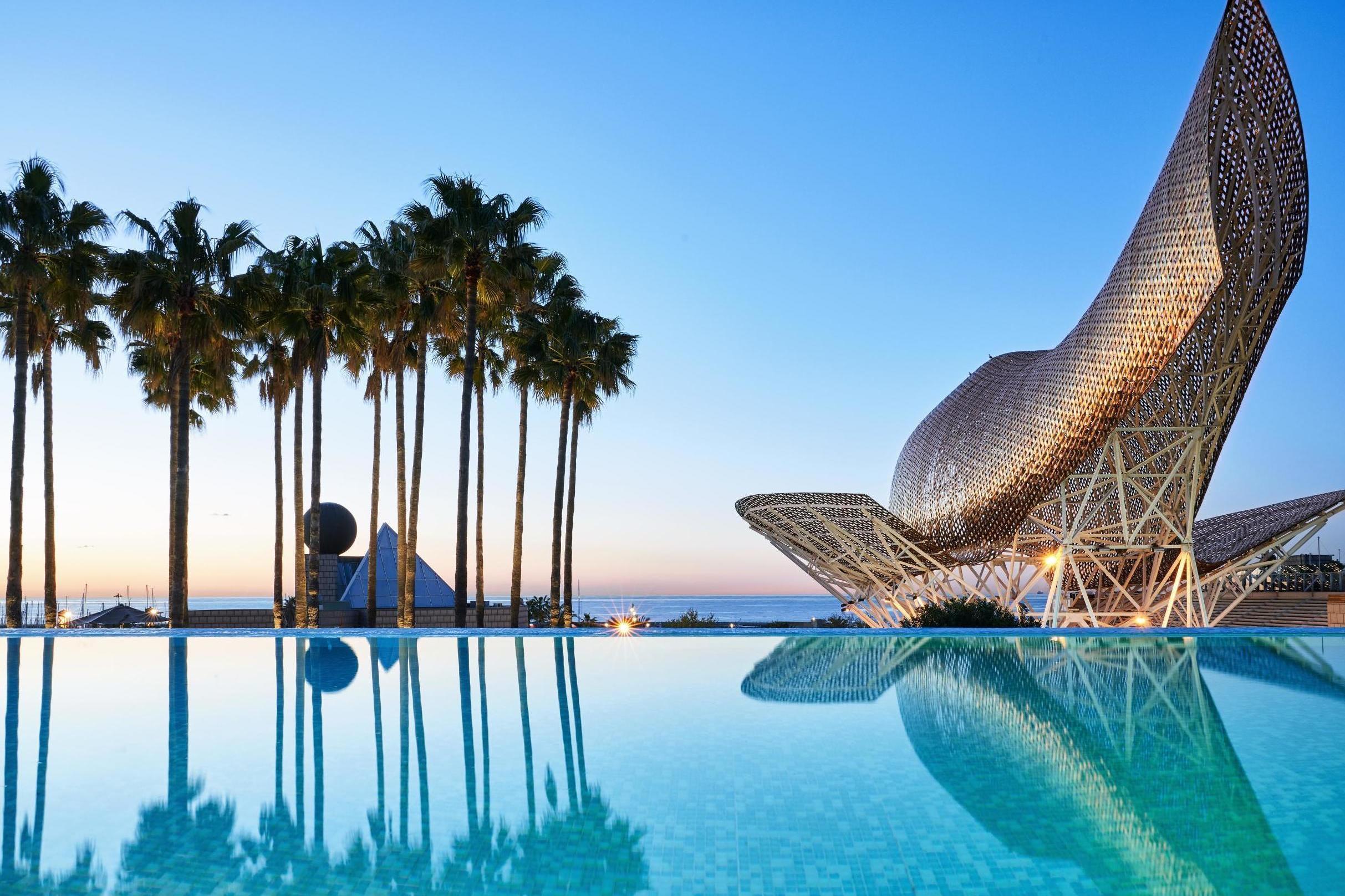
As you might expect at Hotel Art, the creative touches aren’t downplayed, with their own pop-up art gallery showing a range of exhibitions in conjunction with Madrid’s We Collect gallery. Yet the city remains the star of the show. Floor-to-ceiling windows allow for unbroken vistas over the coastline and city, particularly higher up the hotel’s 33-floor span.
Read more: Best boutique hotels in Barcelona - Where to stay for fine dining, location and sea views
Where to eat
Poble Sec and Barri Gotic tapas bars
You’ll find great tapas bars throughout Barna, but the clusters around Calle Blai in Poble Sec and throughout the Gothic Quarter provide fertile tapas bar-crawling territory. A local speciality to look out for is the bomba, a potato and meat croquette in a spicy aioli sauce. In the Barri Gotic, check out the anchoas (marinated or fried anchovies) at La Plata. In Poble Sec, Quimet i Quimet is the place to go for unexpected ingredient pairings, such as the salmon, yoghurt and truffled honey montadito (small sandwich).
4 Gats
El Quatre Gats derives its name from an old expression in Catalan that, literally translated, means “the four cats”, but in slang describes an outsider. When this restaurant opened in 1897, it was the cool cats, the artists who dared to be different such as Pablo Picasso, who frequented this spot. Retaining an air of that era through refined yet rustic decor, there’s often a pianist playing smooth jazz, with generous wait staff on hand to mix you up a refreshing jug of sangria. Try the traditional Catalan dessert, a creamy, caramel-crusted crema catalana.
Read more: The best beaches in Spain
El Raval
Ca l’Estevet is another time-tested bohemian hangout; the kind of tucked-away venue typical of El Raval. Catalan cuisine appears in its finest form here, with house specials of herby snails, garlicky squid and juicy legs of duck. For vegans and vegetarians, there are plenty of dining options in this neighbourhood, such as the eponymous eatery of chef Teresa Carles, where classic Mediterranean dishes get a meat-free makeover.
Michelin dining
From designer buildings to designer dishes, Barcelona’s artistry on the plate has not gone unnoticed by the folks at Michelin. Twin brothers Javier and Sergio are the maestros behind Cocina Hermanos Torres, which has three regular stars plus a Michelin green star, awarded to restaurants committed to sourcing ingredients locally and seasonally. For that, you’ll pay a premium; tasting menus start at €310/£258.
Where to drink
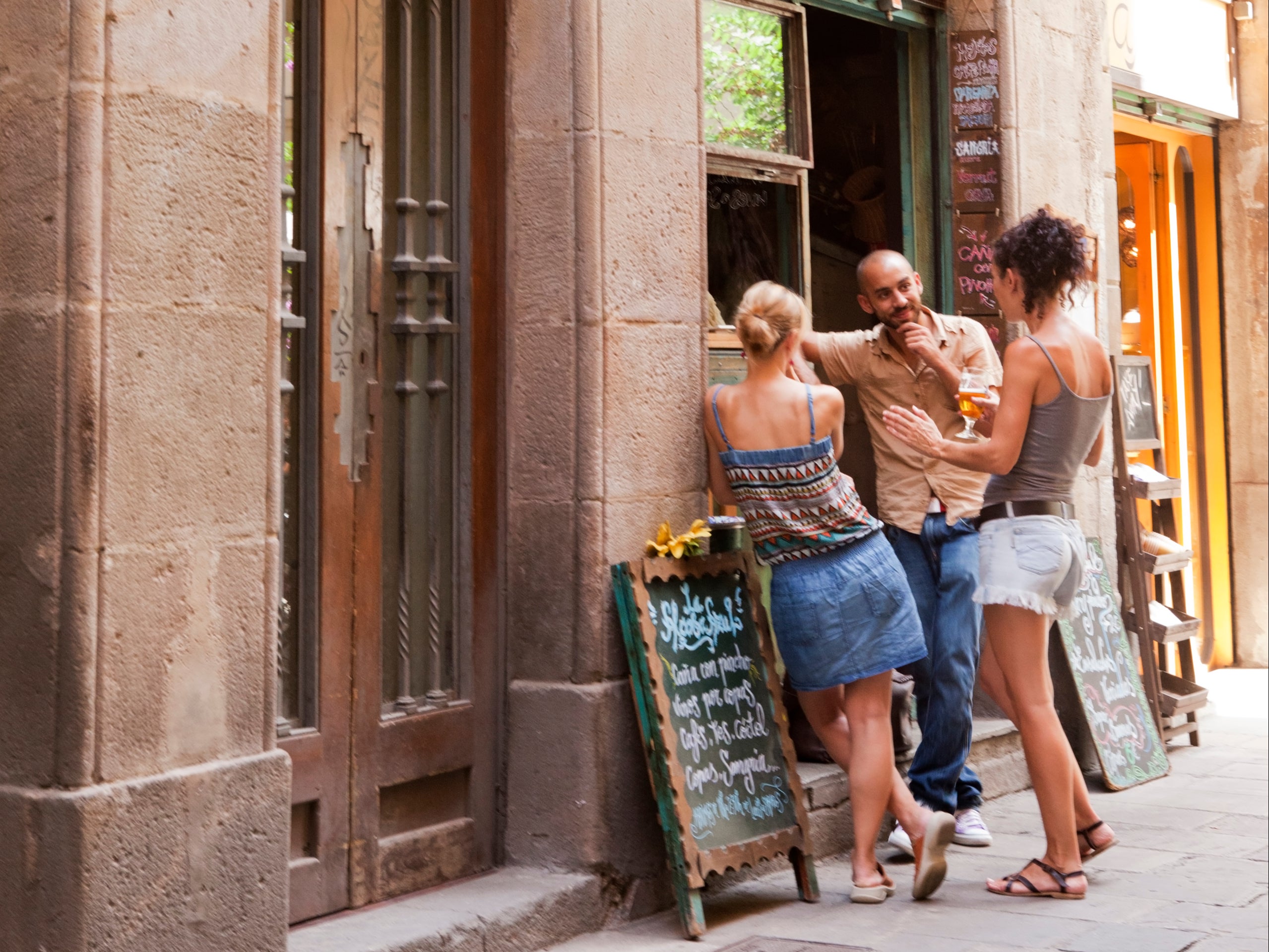
If you’ve not tried much vermouth (spelt “vermut” locally) before visiting Barna, you’ll leave as a connoisseur. The traditional time to “fer el vermut” was late morning or early afternoon, but these days any time’s a good time. For the real deal, try Vermuteria del Tano in the Vila de Gracia neighbourhood or Bodega Fermin in La Barceloneta.
Youthful, artistic El Raval is, quite naturally, the place to go for trendsetting bars, and nowhere does it weirder than La Cobra. If the decor here was a cocktail, it’d be the black widow – gin and tonic with anise and a dash of absinthe – because the closer you look at the whimsical brick-a-brack adorning the walls, the more you notice their sinister, medieval edge, not least amid the X-ray collage.
For all of Raval’s spotlight theft, L’Eixample remains the coolest place to grab a drink, with a string of classy cocktail bars, such as Tandem, where besuited mixologists perform acts of alchemy with the spirits. Custom mixes to suit each patron are the way of things here.
If you’re looking for a side of whimsy with your coffee, El Bosc de les Fades (Forest of the Fairies) is a great way to maintain the sense of magic you may have experienced in the streets while boosting your caffeine levels. The faux forest interior gives you a canopy under which to sup, while other areas of the space feel like the set of a fantasy film.
Read more: The best cities to visit in Spain: Where to stay and what to do
Where to shop
Passeig de Gracia
If you can stomach the crowds, Passeig de Gracia is Barcelona’s busiest shopping street for a reason. Also known as the “golden mile”, this is the haute couture epicentre of Catalonia. Top international brands are represented, alongside homegrown talent such as Santa Eulalia. Meanwhile, El Raval is best for vintage clothing stores and you’ll find plenty of small fashion up-and-comers in El Born.
Souvenirs
All manner of handmade gifts and homewares are sold at stores along La Rambla and within Barri Gotic. Cereria Subira, a candle shop, is rumoured to be among the oldest shops in Barcelona. The shop at the Centre d’Artesania Catalunya sells hand-selected highlights from local artisans.
Markets
The three most notable places to find locally grown produce are Mercat Santa Caterina, with its wavy roof of colourful tessellated tiles, Mercat de Sant Antoni – selling fresh fruit and veg daily and second-hand books on Sunday – and Mercat de la Boqueria, where hanging hams, hunks of cheese and overflowing fruit pots are appealingly presented.
Read more: The Canary Island you might not have thought of for wine – and running
Architectural highlight
It would be easy to opt for Gaudi’s glitz here, but that would overlook the depth of architectural richness in Barcelona. The highlight goes to the finest work of another modernista movement stalwart, Lluis Domenech i Montaner: the Palau de la Musica Catalana (general ticket for self-guided tour €18/£15, daily). Intricate mosaic, sculpture and ironwork, and a fabulous stained glass ceiling demonstrate the skills of the numerous Catalan artisans involved in its creation. Unesco listed the building as a World Heritage Site in 1997.
Nuts and bolts
What currency do I need?
Euros.
What language do they speak?
Catalan and Spanish. Most residents are bilingual.
Should I tip?
Adding 5-10 per cent to the bill is always appreciated, although at bars and over-the-counter cafes, it isn’t expected.
What’s the time difference?
Spain is one hour ahead of the UK and daylight savings changes fall on the same dates.
How should I get around?
Barcelona’s extensive Metro system is regular and dependable. Tickets start at €2.55/£2.13 for a single fare. Trains run from 5am to midnight Monday to Thursday, 5am to 2am on Friday and continuously from 5am Saturday to midnight on Sunday. If you plan to make more than four trips on the city’s bus, tram or Metro network, get a T-Casual card, which allows 10 trips in Zone 1 from €12.15/£10 across the city’s entire transport network. All places mentioned in this article fall within this zone.
What’s the best view?
There are expansive views over Barcelona from the various hills and mountains cradling the city, such as Tibidabo. Views from the terrace at MNAC and the battlements of Montjuic Castle at sunset are captivating.
Insider tip?
Many of the top sights, including Palau Guell, the Design Museum, MNAC and the Picasso Museum, have free admission on the first Sunday of every month. MNAC offers free admission every Saturday from 3pm too, while the Picasso Museum additionally offers free admission (prior reservation required) on Thursday afternoons between the start of November until the end of April and Thursday, Friday and Saturday evenings between the start of May and the end of October. While this occasionally means larger crowds, planning your trip around these days is a great way to lighten the burden on your wallet. In all cases, check online to see if advance reservation is required.
Getting there
Trying to fly less?
Fast trains connect the UK to Barcelona. Grab a Eurostar from London’s St Pancras International station to Paris’s Gare du Nord, then get across Paris by Metro to Gare de Lyon, where the high-speed TGV service to Barcelona departs at least once a day.
Fine with flying?
Vueling, Ryanair, easyJet and British Airways all fly direct from the UK to Barcelona.
Read more: Spain’s warmest places for winter sun



 Africana55 Radio
Africana55 Radio 
